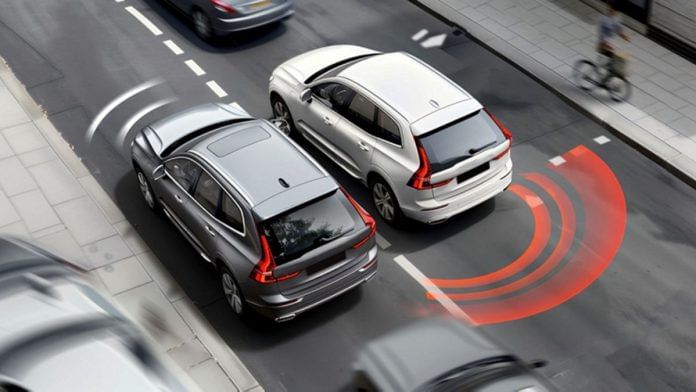When I discuss road safety with senior engineers at automotive companies, an intriguing idea always pops up. What if vehicles could talk to each other? Wouldn’t that dramatically aid road safety? It’s not some far-off fantasy anymore.
Some vehicles in India have very advanced capabilities of figuring out their environment, although they have not been opened up to the public as yet. Recently, Qualcomm, the leading American chipmaker behind Snapdragon processors powering most of our smartphones—hosted an event at Delhi’s Pragati Maidan. It was called ‘Auto Day’—a day-long showcase of how advanced chipsets are transforming the driving experience.
If you have purchased a car in the past five years, you would have noticed this: infotainment screens keep getting ever bigger and have become a major selling point. Car advertisements are now about 20, 30, and even 40 centimetre displays.
On some cars, like those from Mercedes-Benz, the entire dashboard is covered with screens, including one for the front passenger. The German manufacturer is integrating Microsoft Teams into its native MBUX operating system. But if you use Apple CarPlay, like I do, Teams, Webex, and Zoom are already built in, paired with a cabin-facing camera. The camera only works when the car is parked.
Maruti to EVs
These changes are visible even on entry-level vehicles like the Maruti-Suzuki Alto, which now comes with a touchscreen and smartphone connectivity. And there is much more you can do with such systems—that is exactly what Qualcomm was showcasing using Mahindra’s new BE6 and XEV 9E electric SUVs. Their processors enable something called V2X—Vehicle To Everything.
A V2X system doesn’t just integrate cameras and ultrasonic sensors to keep you in your lane and predict and prevent potential accidents. This system uses the cameras to read road signs, communicate with other vehicles, and even communicate with pedestrians, at least their smartphone devices.
Think of it as a protective bubble around your car. If there are roadworks ahead, the cameras can warn you about them. If a vehicle is coming at speed toward you at an intersection, your car will know long before it even enters the frame of your wide-angle cameras–let alone your eyes. A pedestrian is about to cross the road from a blind spot, the vehicle might know and brake. American carmaker Tesla, which both competes and collaborates with Qualcomm, is also advocating for such systems, which is how it powers its ‘Full Self-Driving’ (FSD) autonomous mode.
Some US cities—Austin, Los Angeles, Phoenix, and San Francisco—have already allowed FSD and automated taxi services from Tesla and Waymo. But regulators elsewhere are still taking a long, hard look at such systems.
Also read: Space, comfort, practicality—MPVs are the growing choice for Indian families
Indian roadblocks
For Mahindra to enable more advanced aspects of the V2X system, spectrum licensing issues remain an obstacle, according to Velusamy R, President, Automotive, Mahindra—something he told me right after I experienced a product demonstration inside Pragati Maidan. He added that these advanced systems will require other vehicles on the road—two-wheelers, three-wheelers, and even commercial vehicles—to communicate with each other.
They may not require highly advanced chipsets—I don’t see two or three wheelers requiring animated ambient lighting or a 23-speaker sound system–but this is the future. Personally, I expect Chinese car companies, which have already been integrating Artificial Intelligence (AI) into such systems, to play a big role here. The obvious question is whether any AI system has the ability to deal with the chaos of Indian roads.
I recently drove back from Pushkar on the Ajmer-Jaipur Highway, and it felt like a real-life game of dodging slow-moving trucks across all lanes and other reckless road users. But once I got onto the Delhi-Mumbai Expressway, it was obvious that overall road behaviour is changing for the better.
Of course, technology is no substitute for better road sense. If you are not wearing a helmet on a two-wheeler or your seatbelt even in the backseat, you are taking a chance. But with 1,50,000 plus road fatalities in India, I think technology can definitely play a role, if not today, maybe by 2030 as more modern vehicles enter the scene.
Kushan Mitra is an automotive journalist based in New Delhi. He tweets @kushanmitra. Views are personal.
(Edited by Ratan Priya)







I always look out for your articles and this one doesn’t disappoint.
I guess strict road tests before being given a licence would be crucial as a first step. Sadly, this doesn’t happen in India where driving is considered a right rather than a privilege.